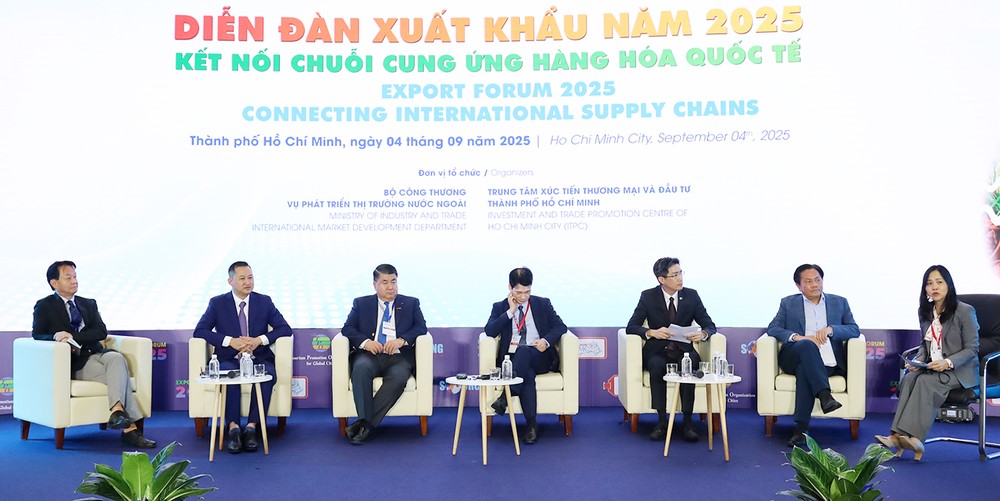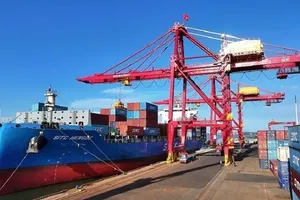
The reciprocal tax framework has just been announced by Vietnam and the United States, creating a long-term foundation for stable bilateral trade. However, the 20 percent tax rate still poses a significant challenge for Vietnam’s main export sectors. In this context, Vietnamese businesses are shifting from passive responses to proactive measures, renegotiating pricing structures with US partners, accelerating cross-border e-commerce, and enhancing the localization of supply chains.
The U.S. remains the leading market
According to data from the Statistics Department under the Ministry of Finance, in the first nine months of 2025, Vietnam’s total import-export turnover reached US$680.66 billion, up 17.3 percent year-on-year. The United States remained Vietnam’s largest export market, with a value of $112.8 billion, accounting for 32.4 percent of total export turnover.
This demonstrates the crucial role of the US market as a key driver of Vietnam’s export growth. However, the 20 percent reciprocal tax rate currently imposed by the US on various Vietnamese goods has created substantial pressure especially on low-margin industries such as textiles, footwear, seafood, and wooden furniture in the short term. In the long term, though, the newly established reciprocal trade framework will help businesses become more proactive in restructuring their export markets.
Chairman Nguyen Ngoc Hoa of the Ho Chi Minh City Business Association (HUBA) emphasized that when the tax mechanism becomes clear, enterprises have a basis to negotiate cost-sharing with importers to maintain stable prices and avoid impacts on purchasing power. Moreover, according to the chairman, in the immediate future, businesses need to restructure costs while still maintaining quality.
In practice, since April 2025, as soon as the new US export tax rates were announced, many domestic exporters have reviewed material consumption norms, switched to long-term contracts with local suppliers to lock in prices, and standardized processes to minimize waste and technical errors. For groups of products with low-margin profits, local exporters aim to keep price increases below the additional tax rate by cutting intermediaries, optimizing logistics, and sharing profits with US partners across delivery cycles—thus avoiding sudden price shocks.
Many businesses have proactively renegotiated profit structures with importers, allocating costs per order to maintain market share amidst the context of a slow recovery in American consumer purchasing power, said economic expert Can Van Luc, a member of the Prime Minister's Advisory Group. A crucial pillar at this moment is to enhance domestic localization and 'green' the supply chain to meet the new compliance requirements from the United States and various other markets.
According to President Vu Duc Giang of the Vietnam’s Textile And Apparel Association (VITAS), the U.S. market currently accounts for over 38 percent of Vietnam's textile and garment export turnover, thus the corresponding tax rates will directly impact orders and the employment of approximately 1.9 million workers. However, this is also a time that necessitates a shift towards a more proactive and sustainable growth model.
E-commerce growth is accelerated
Head Vo Tri Thanh of the Institute for Brand and Competitiveness Strategy emphasized that Vietnam’s response strategy should be divided into two distinct phases.
He added that in the short term, businesses should focus on negotiating tax cost-sharing with importers while leveraging credit support packages and order guarantee mechanisms to sustain production and prevent job disruptions. In the long run, Vietnam’s market potential remains substantial. Beyond the U.S., four major markets, including China, Europe, ASEAN, and Japan, account for roughly 75 percent of the country’s total export value. However, market expansion is no longer limited to attending trade fairs or finding local distributors. It now involves cross-border e-commerce integrated with digital logistics solutions.
According to Deputy Director Bui Huy Hoang of the Center for E-commerce and Digital Technology Development under the Ministry of Industry and Trade, a standardized digital storefront allows Vietnamese enterprises to simultaneously reach tens of thousands of customers across multiple countries. By cutting out distribution intermediaries, businesses can save 15–20 percent in costs enough to offset a 20 percent tax increase while maintaining competitive pricing.
Previously, logistics was a major bottleneck. Yet, as noted by Secretary-General Tran Chi Dung of the Vietnam Logistics Business Association (VLA), the ASEAN logistics network now comprises over 40,000 member enterprises operating across the Asia-Pacific region, with the capacity to expand globally through the International Federation of Freight Forwarders Associations (FIATA). With effective use of digital platforms, Vietnamese logistics companies can fully integrate into this value chain shortening transport times, reducing distribution costs, and improving operational efficiency.
Currently, the ASEAN–FIATA logistics network is developing shorter, faster, and more cost-efficient transport routes to the U.S. and various other markets. By combining e-commerce with local fulfillment services, Vietnamese businesses can more easily expand into Europe, Japan, and the Middle East reducing reliance on any single market.
























